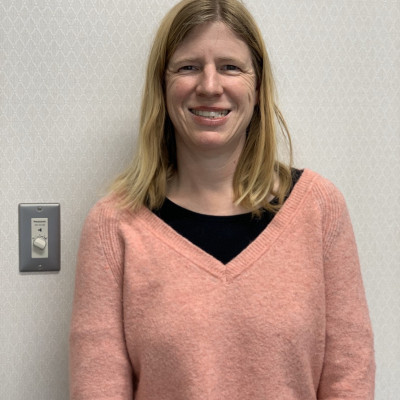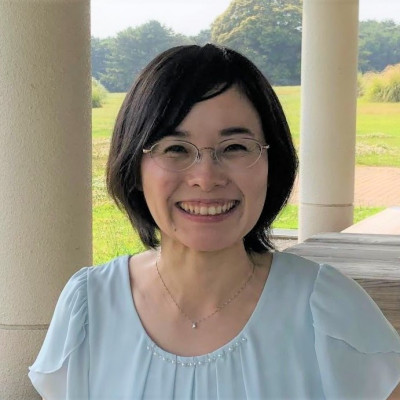Sessions / Zoom 9

Cloud Computing for Teaching and Administration #859
This workshop requires no previous experience and will demonstrate how cloud-computing can help augment and improve teaching and classroom administration, notably in the areas of communication with students, collection of assignments, dissemination of feedback, and grading. Google applications for education, will be discussed and used to show how to develop a more learner-centered, interactive classroom environment where students are encouraged to play more dynamic roles. Outcomes should include (a) awareness of learner-centered pedagogical practices and their implementation via cloud computing, (b) how to better communicate with students, and (c) setting up cloud computing in varied educational contexts.

iPhotography 2.0 #862
There are many great ways to use photography in the classroom, especially with iPads. Images, photographs and videos help to illustrate and make words and ideas more complete. This workshop will provide you with photography tips and apps, as well as ideas for activities that you can use in your classroom.

A Strategic Discussion Plan for Critical Thinking #663
This presentation will outline the materials, procedure, and results of research into a planning strategy for small group discussions. The effects of the strategy on critical thinking and metacognitive awareness will be described.

Demystifying and Teaching Critical Thinking #443
This workshop presents an approach to critical thinking instruction in the context of L2 English academic courses. During this workshop we will discuss how to define and position the concept of critical thinking. We will also review an example of how activities might be structured throughout the term and what materials might be useful. In addition, we will review examples of student work to discuss how teachers can identify evidence of critical thinking.

Developing CT: Impact of Class Size and Reflection #646
College students in six reading classes participated in a study that observed how they develop the habit of thinking critically using textbooks with activities based on Bloom’s taxonomy. Students’ reflective reports and the course-end questionnaire show that over 70% experienced the usefulness of critical thinking (CT) activities, and more than half of them claimed they recognized their elevated habit of thinking critically. Students in large classes suggested individual reflective writing is more meaningful than group activities.

Supplements and Methods to Maximize Your Textbook #418
Promotional Visit the Cambridge University Press pageTextbooks allow teachers to introduce topics, activities, and practice, but they are not always perfect for your situation. This presentation will share activities related to the Cambridge University Press Unlock series to help push students further into higher order thinking and critical thinking skills. Attendees will leave with ideas and links to prints of materials to expand their textbook into a better, more complete, student experience.




Assurance of Learning for a Vocabulary Program #707
As universities in Japan begin to create formal Assurance of Learning (AOL) frameworks, educators need to ensure that program wide vocabulary objectives are in alignment. During this presentation, presenters will share how they developed their program wide vocabulary curriculum in line with their AOL at a mid-sized private university. The presenters will conclude with suggesting ways that program administrators can develop formal processes and mechanisms for monitoring and evaluating students’ vocabulary knowledge.

Phrasal Verbs: Exploring an Embodied Approach #672
English phrasal verbs (PVs) are notoriously difficult for foreign language learners. This is often the result of PVs being numerous in quantity and highly polysemous. In this study, I compared the effectiveness of three different instructional approaches for the teaching of PVs; a linguistics, a cognitive, and an embodied approach. In this presentation, I describe the materials, method, and results from this study as well as possible implications for teaching PVs for language instructors.

Vocabulary Acquisition Through Extensive Listening #604
This study investigated the effects of extensive listening (EL) on vocabulary acquisition among students with different vocabulary levels. Seventy-five Japanese university students engaged in EL for one-semester. The results showed that 12 hours of EL can increase students’ aural vocabulary knowledge regardless of vocabulary level, although the improvements are small. In order to increase the effectiveness, EL homework needs to be adjusted in terms of its procedure and materials.

Gairaigo: Japanese EFL Learners’ Hidden Vocabulary #633
This presentation describes an exploratory study of a brief university EFL course intended to activate learners’ English-Gairaigo (foreign loan word) vocabulary, including lesson contents, pre- and post testing results, and a survey conducted to assess students’ reception of the course. A brief history of Gairaigo, techniques for promoting awareness of it in the classroom, and a discussion of final test results as well as students’ enthusiastic response to the course will also be shared.

Collaborative Creativity in the Language Classroom #750
This presentation will be useful for teachers interested in promoting student creativity in their classroom. It synthesises the latest research to understand a) why creative skills have become significant in education policy internationally and in Japan, b) how we can understand creativity as a phenomenon, and c) how to promote creativity, particularly collaborative creativity, in the language classroom. It is part of an ongoing research project into the role of creativity in Japanese education.

Forms of Vocabulary Knowledge and Reading Ability #746
In this study four modalities of vocabulary knowledge (Yes/No checklists, form recall, meaning recall, and meaning recognition) were correlated to the TOEIC Reading section using a bootstrapping approach. Meaning recall had the highest correlation; Yes/No tests the lowest. Meaning recognition tests (e.g., the VST) also fared relatively poorly. The implications will be discussed.




Enhancing NGSL Recall Through Blended Learning #621
The presenters will examine the adoption of a blended learning vocabulary program called “English Central” into a mid-sized private Japanese university with the aim to enhance students’ vocabulary knowledge and recall. Building on a body of literature that supports the use of the New General Service List (NGSL), the presenters examine how blended learning systems can be used effectively in the classroom to promote students’ vocabulary knowledge.

Self-Marking Meaning-Recall Vocabulary Levels Test #541
This presentation explains the limitations of the existing levels tests, and describes tests available at vocableveltest.org. Users select the wordlist (NGSL, SUBLEX), band size (100, 500, 1000), and the item format (meaning or form recall) of tests. Typed responses and dichotomously marked responses are downloadable. Incorrect responses are evaluated and valid answers are added to an answer bank. Classical test theory, item response theory analysis, and post-test interviews indicate the tests provide validation evidence.

Deep Vocabulary Study: Semantic Representations #686
Most contemporary vocabulary instruction in ESL centers around simple, shallow meanings or translations. For words with more abstract or complex meanings, these shallow representations can be insufficient. Using the internal semantic representation of words, a deeper meaning can be provided to address this. An exploratory study with 18 intermediate Japanese students showed that their usage of 20 English verbs improved with instruction using internal semantic representations. This result supports deep vocabulary study in ESL.

Principles of Word Learning: A Roadmap to Success #383
PromotionalTeachers should understand the different aspects of word learning and what that entails at the form-meaning level and for the more complex deeper aspects of vocabulary knowledge such as collocation and colligational knowledge, register, politeness, lexical domain, polysemy and so on which cannot be directly taught or learnt. Rather they need to be “felt” or “sensed”. The presentation will put forward a roadmap for teachers and students to follow.

Making Visible the Ghosts Which Reproduce Anxiety #536
Japanese learners’ anxieties regarding the enforced study of English is related to their cultural upbringing as well as the manner in which U.S. hegemony was established as a result of World War II. The U.S. has greatly influenced the type of educational system which has been installed via their significant influence on Japanese politics. A prominent example of this is the influence of standardized testing in the form of the TOEIC exam.

Interactive Presentations Increase Participation #467
Student reticence can be a significant problem, especially with first-year students in large classes. Employing interactive presentations using critical thinking can increase both student agency and classroom participation. In addition, the activity creates a situation where classroom language interactivity is predominantly student-student in a whole class environment. The presenter will outline the steps to effectively implement such a system.

Connecting Speaking Confidence With Self-Efficacy #607
Being able to communicate in English opens up a world of opportunities to study or work abroad. Yet the English proficiency of Japanese graduates remains one of the lowest in Asia. In this presentation, I will discuss how a qualitative study of Japanese university students’ sources of self-efficacy revealed how learning experiences at JHS and SHS contributed to students’ speaking confidence and proficiency. I will conclude with some recommendations for university, JHS, and SHS teachers.

Reducing Cognitive Bias in Small Group Discussion #628
Small group discussion offers students many potential benefits. Some of these benefits include developing critical thinking, perspective sharing, and exploring issues. However, the potential of group discussion work can also be negatively impacted by the effect of cognitive biases such as confirmation bias and groupthink bias. This presentation looks at some strategies and tweaks teachers can employ to mitigate some common cognitive biases and maximize the power of small group discussion.